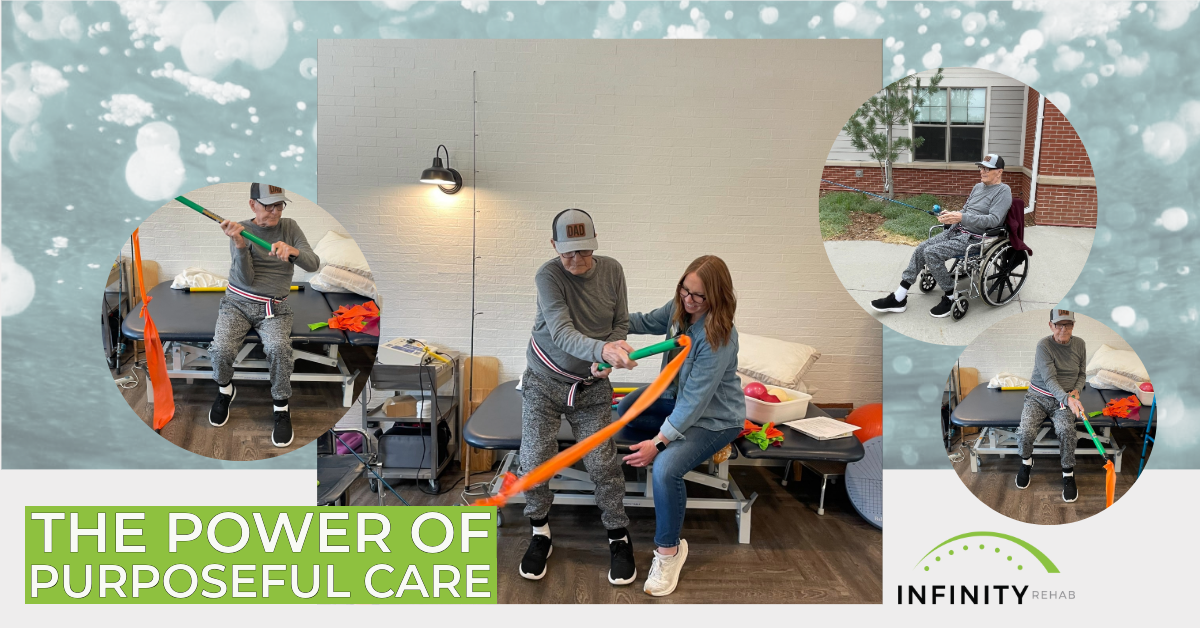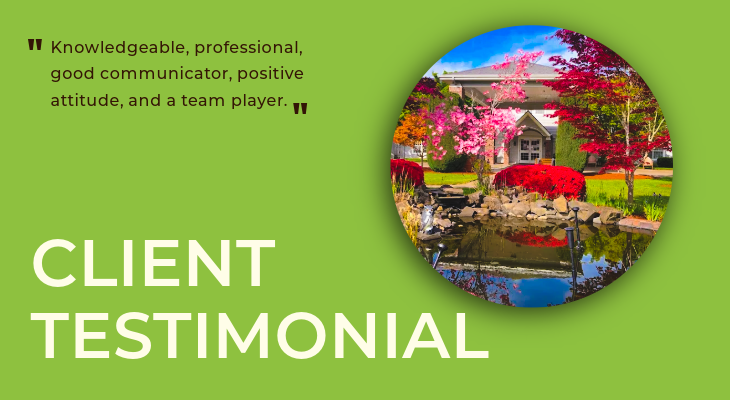Today’s blog comes from the desk of Cathi Lamoreux, CCC/SLP – an Infinity Rehab Director of Rehab. Cathi oversees rehabilitation services for several therapy departments in the Spokane, WA area. She is always finding ways to integrate creative therapy techniques to better suit individual patients. Recently, she has introduced horticulture into her sessions.
What is so important about the color green? The color green helps decrease stress when people are in strange, unfamiliar environments. Adding a plant to a new apartment or home, or a resident’s room helps decrease stress. In addition, a research study proved that looking at a green scene reduces fear and anger, lowers blood pressure, heart rate and tension in just three minutes with no negative side effects. Who would have thought that one little plant could do all of that? No wonder that mother nature cloaked the world in a sea of green.

What about the people with whom we work? How often do they get outdoors? How often do they have the opportunity to smell the roses, touch a leaf, or admire a vista? How often do we bring the outdoors in?
We are always challenged to look for a different way to motivate our residents, encourage them to reach just a bit further, initiate movement, cognitively engage, maintain attention long enough to benefit from exercise, and regain a sense of control.
As people move through the continuum of care, they gradually give up many of their leisure activities. How many times have you had a conversation with someone who laments not being able to participate in past pleasures? I often use the term “new normal” with my residents when we are having that conversation. It is one thing to validate the loss and another to do something about it.
I am working right now with a resident who was living in his own home in our retirement community. He is experiencing early stages of Alzheimer’s and was becoming increasingly unsafe in his home. A fall landed him in the hospital and then in our skilled nursing facility. His family took the opportunity to close up his home and help him move into an assisted living apartment. Although, he was upset to leave his home, he acknowledged his need for assistance and has actually flourished in his new apartment, surrounded by friends in a familiar setting.
He is known in the retirement community as the person who always had the first ripe tomatoes! He can explain in great detail how he planted them in containers on his patio, tied them up to the post, positioned them for just the right sunshine, fertilized, watered and nurtured them to harvest. He talks about his tomato growing days in the past tense. But, why? What a wonderful opportunity to use something he loved to do therapeutically.
We can walk the grounds to locate the best place for his tomato containers considering the variables of sun, safety, accessibility; determine who to approach for permission to use common space; browse catalogs for the different types of tomato seeds; develop a list of needed materials; work on a timeline for planting; problem solve the purchase of plants and materials; do the planting; develop a checklist to keep track of watering and fertilizing needs; maybe even take pictures of the various stages of growth and keep a journal; and, finally, enjoy the fruits of his labors. How awesome is that?
The timeline for this project is obviously much longer than a normal span of time I would spend with a resident in therapy. But, part of the activity can also be to engage other people in the project. How about activities, family, friends? All can be brought on board and help to see it succeed.
Many facilities have accessible outdoor spaces, raised beds, good seating, pathways, trees and foundation plantings. Do you use those assets therapeutically? Are they safe, in good repair, and accessible? Are the areas covered from intense sun? Can they be seen from the windows? Can family and friends use them during visits? Are there formal and informal activities held outdoors?
What does the facility look like inside? Are there live plants? Are residents encouraged to have plants in their rooms? Does the staff have plants in their offices? Are there good viewing windows for someone to be able to sit and look outside? Is there the opportunity to touch, smell and even taste plants?
Access to nature truly does provide purposeful, constructive activity that is valued by society and involves both mind and body. It is our job, as therapists, to open our eyes to the vast possibilities the natural world offers and to bring on the green!
Part Two of “Bring on the Green”






